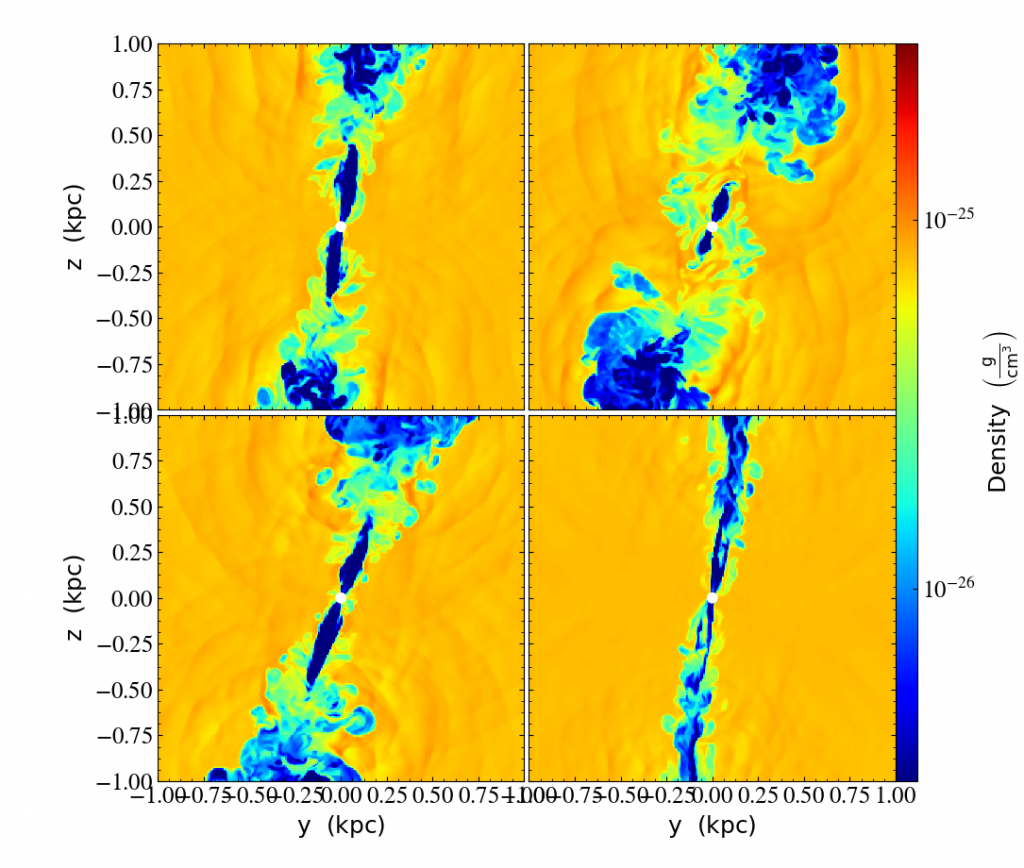Figure: Density slices of some of my simulations with different precession angles and periods for jets from the supermassive black hole (SMBH)s.
Background
Galaxy clusters are gravitationally bound assemblies of hundreds to thousands of galaxies and are the most massive systems in the Universe. Most atoms in clusters are part of the intracluster medium (ICM), a diffuse, X-ray emitting hot plasma. In some clusters this gas should radiatively cool, collapse, and form stars at the cluster center, but does not. This appears to be due to heating by relativistic jets powered by accretion onto supermassive black holes (SMBHs) in the active galactic nuclei (AGN) at the centers of these clusters !
What did I do?
Previously most people used an analytical Bondi formula (see here) to approximate the accretion onto the SMBHs in simulations, but this approach is very physically unrealistic. I instead, have developed a new subgrid method that measures the accretion rate through an artificial control surface , incorporating the black hole plus accretion disk system and predicting the feedback efficiency self-consistently, reducing the number of free parameters compared to existing approaches. With such a model I am able to perform simulations of the central kilo-parsec scale region in the cores of galaxy clusters, in order to investigate the details of the physical processes involved in the cluster core scales.
Open Questions
How much uncollimated disk winds can contribute to isotropization of feedback?
The role of MHD instabilities in the ICM?
How to explain the observed structures in cores of clusters?
Cool-core and non-cool core dichotomy of clusters, and outlier cases (e.g. Phoenix cluster)?
How would a better model implicate for the supermassive black hole – host galaxy co-evolution?
